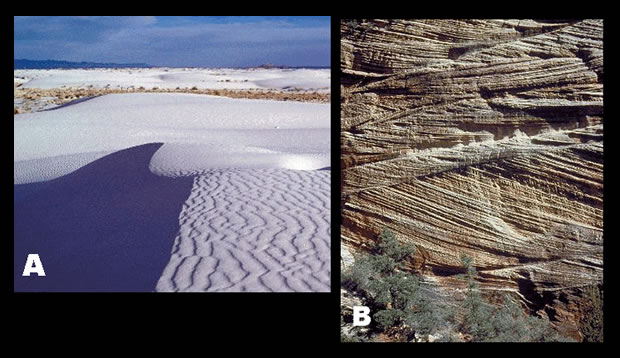
The sand dunes in White Sands National Monument, NM shown in (A) may someday be preserved in sandstone, a
sedimentary rock made of sand, like that shown in (B). If you made a sand dune into solid rock and then cut it in half, it would look like the canyon wall in (B). This rock is evidence that millions of years ago sand dunes were a part of this landscape.
Back to the Table of Environments
(A) Bruce Molnia, Terra Photographics and (B) Martin Miller University of Oregon. Both images courtesy of Earth Science World Imagebank.
Last modified January 14, 2004 by Lisa Gardiner.
You might also be interested in:
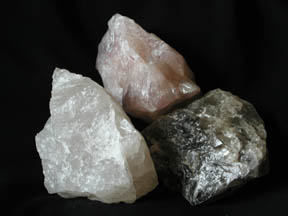
Spotting minerals is fun! There are many different types of minerals. Each has a different name and special traits. You can learn more about minerals by looking closely at them to understand their special
...more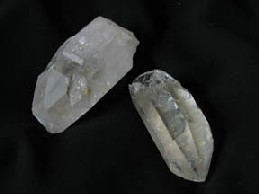
This mineral is called quartz! Sometimes it looks white like milk but usually it looks clear like glass, sometimes with a little pink or gray tinge of color. You can find crystals of quartz in many different
...more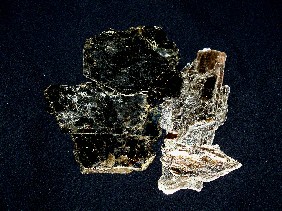
Mica minerals make some rocks sparkle! Look for them in your igneous and metamorphic rocks. Do they make your rocks sparkle? They break into flat plates because they have cleavage.
...more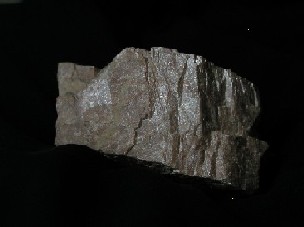
This is a feldspar mineral! Look for it in igneous rocks where it looks like white or pink crystals. You might find it in other types of rocks as well.
...more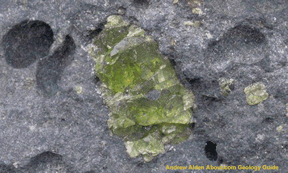
The mineral that is green is called olivine! Look for it in igneous and metamorphic rocks. In this picture, olivine is filling a hole in the igneous rock.
...more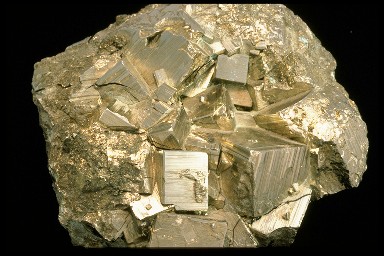
There are at least 2000 minerals on Earth. That's a lot of minerals! But you don't need to know all of them to spot the minerals lurking in the rocks of your backyard. That is because only a small number
...more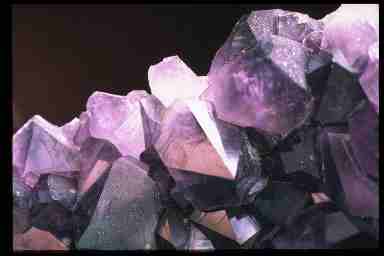
Minerals are the building blocks of rocks. There are many different types of minerals. All of them are solid and all are made of atoms of elements. Minerals can grow even though they are not alive. Most
...more















